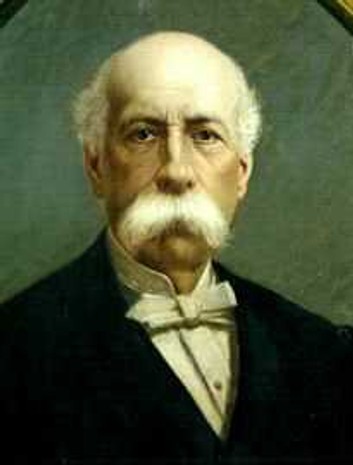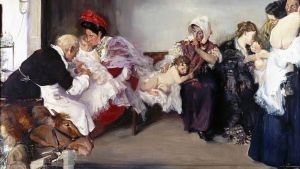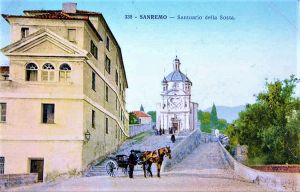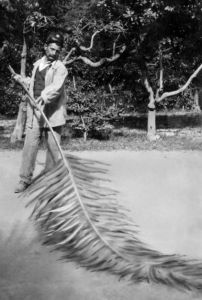Activities for the care of the city's hygiene and health system
Pandemics and the remedies for them
Between 1870 and 1915 San Remo had abandoned its character of ordinary provincial village and had become a tourist town of international renown. Certainly hygiene was one of the main issues to be resolved for all Italian towns in the aftermath of unification and Sanremo was no exception.
Certainly hygiene was one of the main issues to be resolved for all Italian towns in the aftermath of unification and Sanremo was no exception.
In the report presenting the Crispi law on hygiene and public health of 1888, known as "The National Health Code", which made it compulsory for municipalities to adopt Hygiene Regulations, it is stated that 6. 400 Italian municipalities lacked even the simplest sewers, in 1,148 there was no urban waste collection service, in 1,350 urban waste was simply collected in the courtyards, in 1,286 all the houses had no latrines, in 741 sewage was only drained when it rained.
Twenty years later, despite the renovations, the situation had only partially improved.
In the second half of the 19th century, for cities, as well as for climate stations such as San Remo, sanitation was a decisive issue, the resolution of which could not be postponed or prolonged.
 This is why, in the programmes of the various municipal administrations, the problem of the measures to be taken to prevent the infectious diseases that were decimating the population and infesting Europe in the 19th century had to be resolved.
This is why, in the programmes of the various municipal administrations, the problem of the measures to be taken to prevent the infectious diseases that were decimating the population and infesting Europe in the 19th century had to be resolved.
The bloodiest of these were cholera and smallpox, but tuberculosis, syphilis, measles, scarlet fever, diphtheria, typhus and leprosy were also causes of mortality.
At that time, there were no specialised hospitals capable of dealing with these types of pandemics; they were more like empirical cures, even though the doctors of the time did their best to deal with them.
Leprosy
A fair number of lepers were already present in Sanremo in the 18th century, probably the result of maritime traffic with the Orient or descendants of sick people who had been disembarked "in antiquity" from some Saracen vessel and abandoned on the nearby coasts, without a fixed abode, wandering and begging in the streets of the city were a very unedifying sight.
 Thanks to King Carlo Alberto, who was passing through Sanremo in 1853 on his way to Nice, he donated a considerable sum to modify part of the former Convent of San Nicola, near
Thanks to King Carlo Alberto, who was passing through Sanremo in 1853 on his way to Nice, he donated a considerable sum to modify part of the former Convent of San Nicola, near  the Sanctuary of the Coast, to be used as a leper colony, thanks to the Piedmontese architect Ernesto Camous, to house and cure these unfortunate people.
the Sanctuary of the Coast, to be used as a leper colony, thanks to the Piedmontese architect Ernesto Camous, to house and cure these unfortunate people.
Later, in 1858, Vittorio Emanuele II, having become insufficient the old Napoleonic hospital located in the old convent next to the church of the Angels (former military district), had the remaining part of the building used as a hospital and gave it to the Mauritian Order. Only from that moment on did Sanremo have a real hospital, which would be of great use for the events to come.
 In Sanremo, since the twenties, a cleaning service of the town was carried out. Contracted out to private companies or managed economically by the municipality, this service was reduced to the "sweeping" of the main public streets. However, its efficiency left much to be desired, mainly due to the dirt surface of the city streets.
In Sanremo, since the twenties, a cleaning service of the town was carried out. Contracted out to private companies or managed economically by the municipality, this service was reduced to the "sweeping" of the main public streets. However, its efficiency left much to be desired, mainly due to the dirt surface of the city streets.
The work of "paving" and "cobbling" that was carried out from the 1960s onwards helped to improve the hygienic conditions of the streets, which remained very dusty.
After the construction in 1828 of the aqueduct commissioned by Mayor Carli, the most important public streets began to be "watered", albeit very sparingly and too rarely, but the modest nature of the city's water supply did not allow for better performance in those years.
A report by the Town Council to the Municipal Council of 31 May 1867 states that, « although the Administration has taken great care and some progress has been made with regard to the cleanliness of the main streets of the town, it has not been able to provide similar cleanliness in the mountainous parts of the town, nor has it been able to put an end to the inconveniences that are complained of with regard to the transport of rubbish, which is perhaps due to the scarce number of Municipal Guards and the inveterate and not very praiseworthy habits of a large part of our population ».
Venereal diseases
For this problem, within the framework of the Health Offices, the "visiting doctors" exercised their profession and were responsible for the health control of prostitution.
On 8 July 1869, the Minister of the Interior addressed the Prefect with this unusual recommendation:
« It is my understanding that in some health offices the visiting doctors admit medical assistants or medical students, or use voluntary substitutes to examine them in their absence. It is the intention of the Ministry that the service of examining prostitutes be carried out exclusively and personally by the visiting doctors, and without the intervention of outsiders, otherwise the guarantees of competition, ability and personal morality with which this very delicate service has been surrounded would be useless. In cases where it is indispensable to have a visiting doctor temporarily stand in for a justified absence or regular leave of absence, the Prefects alone must provide for this on their own initiative ».
During a meeting of the Sanremo Town Council, criticism was levelled at the service of the two doctors of the Hygiene Office. Bernardo Calvino refers to « the irregular way in which death certificates, i.e. reports of necropsy, are issued, noting that, for deaths occurring in the countryside, reports of examinations are issued, but no examinations are carried out; and the reports are therefore issued on the basis of a simple report from the relatives of the deceased, corroborated at most by the contribution of two witnesses taken from the scene; adding that sometimes, in order to get the dead person out of the house as quickly as possible, the report states that he died several hours earlier than the time he died; this certainly constitutes an act, an abuse, of the utmost gravity ».
The Municipal Council was instructed to "dismiss" the two doctors currently in charge in good time and to put forward proposals for restructuring the service.




